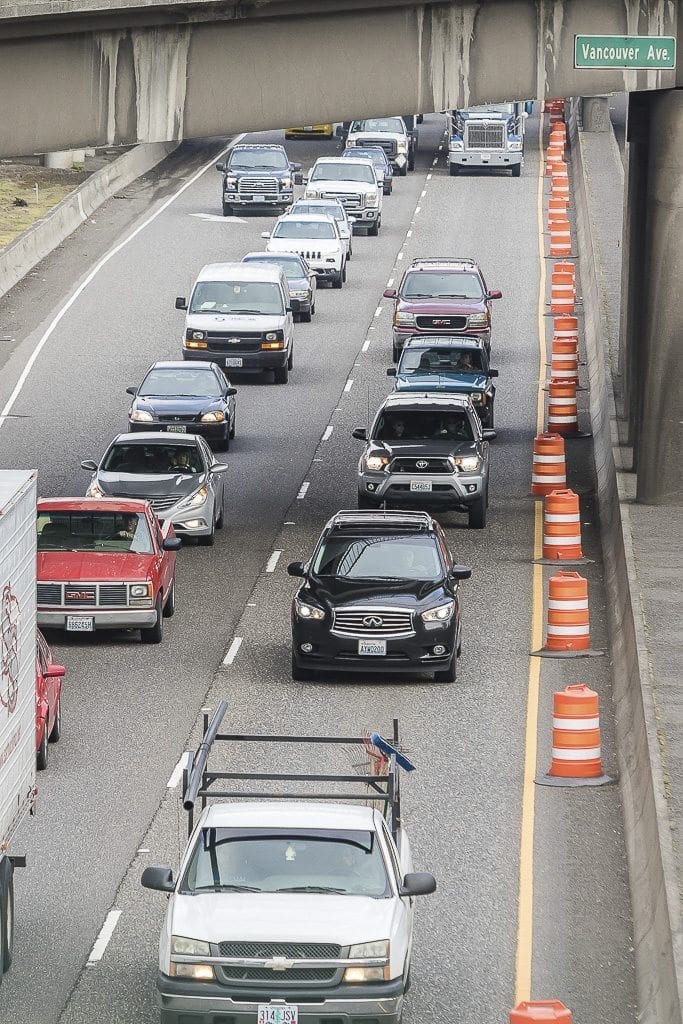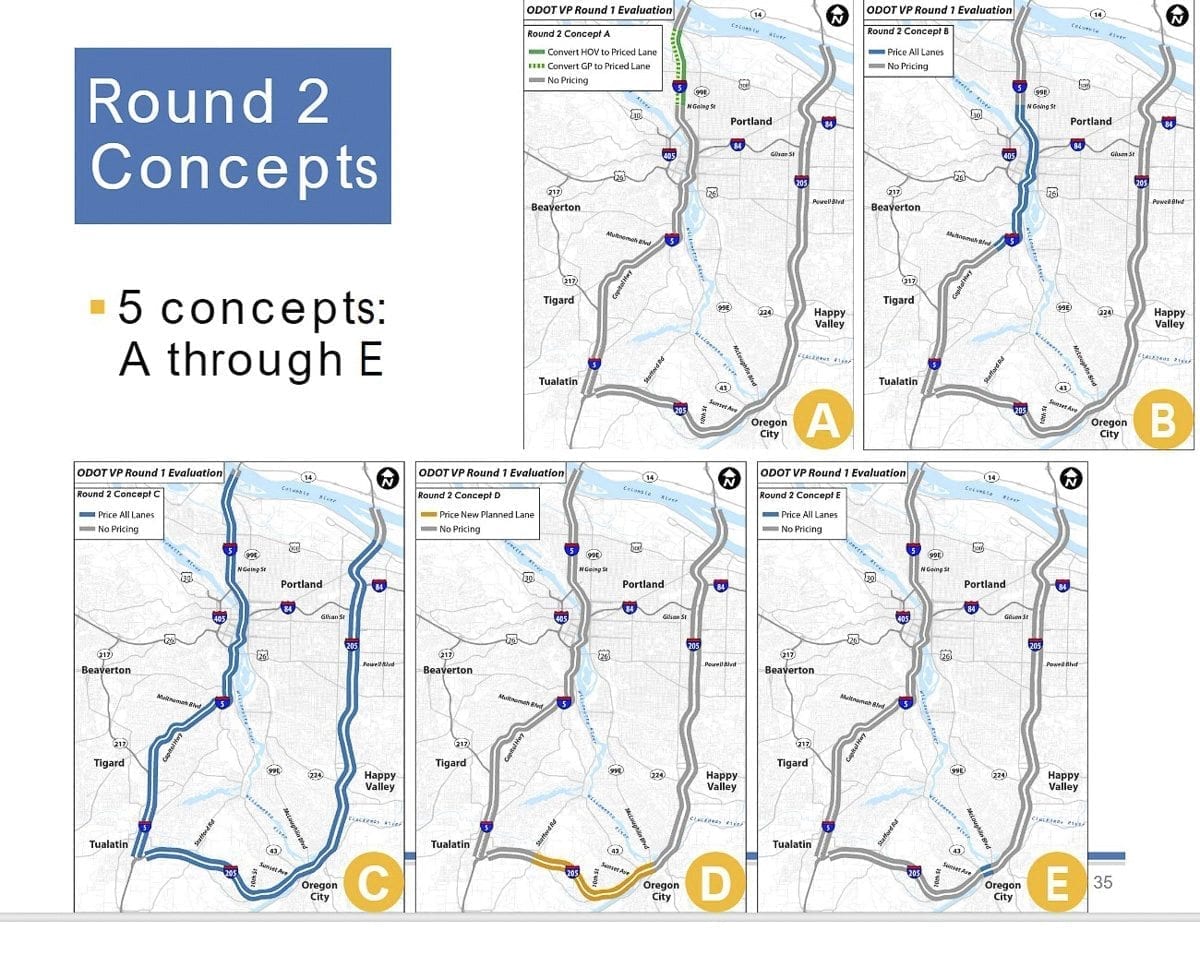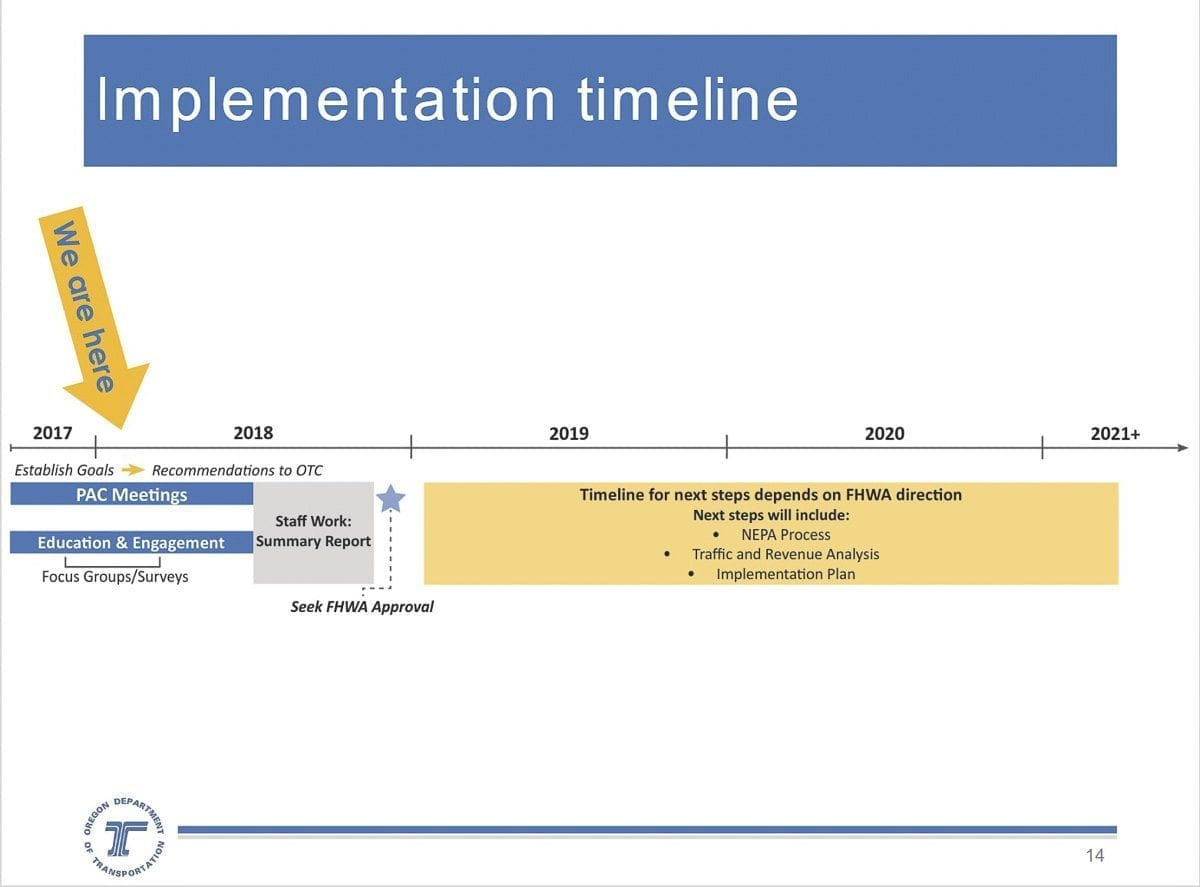This video from ODOT attempts to answer Frequently Asked Questions about Value Pricing in Oregon
It will still be several years at least until tolls become a reality on freeways in Portland
VANCOUVER — The debate over tolling all or some of I-5 and I-205 in Portland rages on, but Oregon’s Department of Transportation (ODOT) held its final planned open house for this phase of the project Monday night in Vancouver. This was a bonus chance for people in Clark County to see where the plan stands right now, and voice their concerns to transportation officials.

According to ODOT’s Don Hamilton, around 85 people showed up at the Luepke Community Center on Monday. That’s about half as many people as they had in January during the first Vancouver open house on Value Pricing at the Vancouver Community Library.
“What we’re hearing in Vancouver is not much different from what we’re hearing in other places,” says Hamilton. “People obviously don’t like to pay a toll, don’t like taxes. Of course we understand that. This is new. It’s new for everybody around here.”
Value Pricing, commonly known as tolling, or Congestion Pricing, is being introduced in busy metropolitan areas across the country. Washington state currently has tolls on the SR-520 floating bridge in Seattle, as well as priced lanes on I-405 through Bellevue, in addition to tolls on SR-167 between Auburn and Renton, and one direction of the Tacoma Narrows bridge. The premium lanes on I-405 have been shown to decrease average commute times, and public opinion of the priced lane option has steadily improved in the years since it was implemented according to Washington State Transportation officials.
“I’ve been here for seven years now,” Hamilton adds, “and the more time I spend here the more I realize that transportation isn’t about engineering, it’s about psychology. It’s really about human behavior.”
While money raised from tolling in Oregon would go to funding transportation projects, Hamilton says that’s not the ultimate goal. “The primary function here is to create more traffic at different times of day. An incentive that people will take the carpool, or a different time of day to travel,” he says.
Right now commuters in Clark County seem fairly united against the idea of paying to drive in Oregon. The common argument is that there are only two ways to get across the Columbia River into Portland, meaning tolls potentially couldn’t be avoided, and many are tied to a schedule set by their employers.
“The Vancouver issues are complicated. Because we’re hearing a lot of people say ‘I already pay taxes and I don’t get anything for it’,” says Hamilton. “Well, they do. They presumably are spending 8 or 9 hours a day in Oregon, and they get the protection that their Oregon income tax money provides them for that.”
In Oregon, income taxes go to pay for police and fire services, in addition to other things, but they do not fund road improvements. “The only way Vancouver people pay for improvements to roads is if they buy gas in Oregon, which presumably some of them are doing,” says Hamilton.
The five current options being studied by ODOT and their consulting firm are:
- Turning the northbound HOV lane on I-5 into a priced lane and converting one Southbound lane in north Portland into a premium lane.
- Tolling all lanes of I-5 both directions through downtown Portland, from Multnomah Blvd at the south end to Going Street at the north end.
- Tolling all lanes of I-5 and I-205, both directions, from the I-5/I-205 split in Tualatin to the Columbia River.
- Adding a lane on I-205 from Stafford Road to Oregon City and tolling that lane.
- Tolling only I-205 at the Abernathy Bridge in Oregon City both directions.
“Under four of those five options you could get off the bridge when you get to Oregon and take back roads without paying a toll,” says Hamilton in response to the argument that Clark County residents would be especially hard hit by tolls in Oregon.

“Somebody coming from Hazel Dell that’s going to Hillsboro working at Intel, they might have to pay a toll on a quarter of their trip, something like that,” he adds, “It hits everybody equally, and that means that you pay equally and you get the same benefits that everybody gets. And I think that’s one of the things that gets lost in this, that there’s an advantage — there’s something you gain for the pay, and that is less congestion. And that saves you time.”
More questions, fewer answers
Of course the ultimate reality of those possible benefits remains to be seen, and many questions still haven’t been answered. One of those is how the tolls will be priced. In general, the thinking is that they would be variable, costing drivers more during peak times, with the possibility of free or low-cost times when congestion is lower. That’s similar to the system WSDOT uses for I-405 near Seattle.
The 25-member Public Advisory Committee, which includes three Southwest Washington representatives, expects to hear further analysis of the five options at a meeting on May 14. They then have one more meeting in June before handing their recommendations off to the Oregon Transportation Commission, which will have their first meeting on the topic July 12. The public will have the option to comment at that meeting. OTC will submit their proposal to the Federal Highway Administration (FHWA) be the end of the year.
What will follow then could take months or years. Assuming federal approval is eventually granted, a new process begins.
“Once we get approval, then we think about the infrastructure,” says Hamilton. “What do we have to put in place, what kind of tolling centers do we do?”
At minimum, Hamilton says, it would be “several years” before tolling becomes a reality in and around Portland, in whatever form it takes. In fact, there’s speculation in some circles that tolls could come to some Clark County highways before we see them on I-5 or I-205 in Portland. That’s primarily because Federal authority isn’t needed to implement tolling on a state highway, such as SR-500. No concrete plans are in the works, but experts say it’s only a matter of time before systems like we’re seeing in and around Seattle come to Vancouver and elsewhere. Seattle’s new mayor is even proposing a toll to access parts of downtown as that city continues to struggle with growing gridlock.

Why not build more roads?
One of the key arguments by opponents of tolling in Oregon is that it would do little, if anything, to address the lack of lane capacity for the expected number of new drivers flooding into the area over the next decade. But it also represents a shift in thinking by many transportation experts around the country.
“One of the ways that you gain capacity is by moving people to different times of the day, as this would do, and by moving people off the freeways into mass transit, (and) carpools,” says Hamilton, “That’s one of the ways that you can far more cheaply improve the efficiency of some of these roads.”
While no reports are available, Hamilton says ODOT believes many businesses would be willing to examine the possibility of changing employee schedules to better take advantage of lower-priced commuting times.
Whether that’s true or not, is sure to remain a key part of the argument over Value Pricing, Congestion Pricing, Tolling, or whatever else they decide to call it. But it bears remembering that many of the details of Oregon’s plans, and the impact it would actually have on drivers in Clark County, remain to be filled in. And even once we do get more information, it will still be well into the next decade before it becomes a reality.




